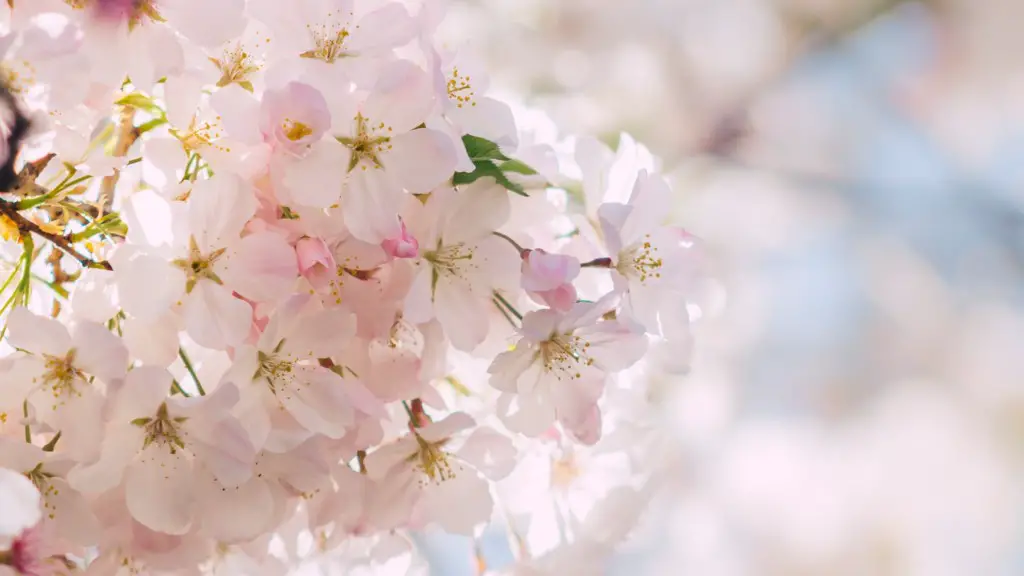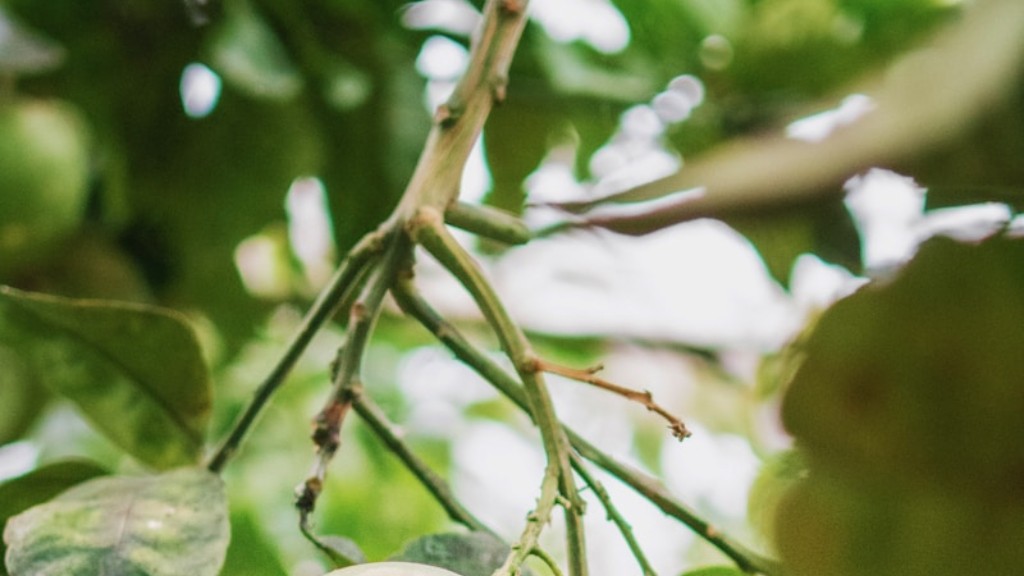Pruning an espalier apple tree can be a daunting task. However, with the right tools, knowledge and technique, you can easily achieve success.
Before you begin, it’s important to understand the reasons for pruning the tree. Pruning is essential for the development and overall health of the tree by ensuring that it remains in the preferred shape, encourages strong branch growth and prevents overbearing fruit production.
To get started, get a pair of sharp pruning shears, loppers, pruning saw and bypass pruners. Bypass pruners are great for cutting through branches up to one inch in diameter, loppers for branches up to 2 inches and a pruning saw for branches that are thicker.
Before you make any cuts, assess the tree’s overall structure. Look for any crossing branches, diseased or dead branches, or any shoots which have grown out of the tree’s desired shape. This can help determine which branches should be removed.
Generally, the lowest branches should be kept because they help form the shape and structure of the tree. Do not prune too much in one go as the tree needs growth to remain healthy. Remove dead or dying branches above the lowest healthy shoots first, then move into the higher parts of the tree.
Once you start pruning, use the three cut method. First, cut the branch on the underside, then make a second cut of two-thirds of the way into the branch from the top. Finally, make a third cut to completely remove the branch. This method helps to minimize damage to the bark.
Some important things to keep in mind when pruning an espalier tree are to maintain the desired shape, make sure the tools are sharp and clean and to never prune back more than one-third of the tree’s canopy. Doing this will assure that your espalier apple tree will stay healthy and produce healthy fruit.
Shaping an Espalier Tree
Shaping an espalier tree can be tricky but with the right tools and techniques, it can be done. One of the most popular shape for an espalier apple tree is the fan shape. This shape is symmetrical and aesthetically pleasing to the eye.
To begin, trim the branches until they reach a uniform length. This encourages growth in the desired shape and also keeps the tree looking uniform. Prune the sides first, then the center before moving onto the next level. Make sure to use the three cut method to ensure a clean cut.
It is important to prune branches that cross over others or interfere with the shape of the fan. Dead or dying branches should also be removed to prevent the spread of disease. The goal is to have a healthy-looking tree and not one that looks sparse or overgrown.
When trimming a fan shaped espalier apple tree, remove any shoots that have grown too far away from the desired shape. This helps to keep the tree looking uniform and prevents overbearing fruit production. Be sure to cut the top of the tree at an angle to allow for good drainage.
It is important to not overprune the tree. Excessive pruning can result in lack of flowering and growth. To ensure the tree’s health, prune back no more than one-third of the canopy in one go. Doing this will create an aesthetically-pleasing, healthy and productive espalier apple tree.
General Maintenance
Once your espalier apple tree is in shape, you can move onto general maintenance and keeping it healthy. A healthy espalier apple tree should be fertilized once a year to ensure that it gets the nutrients it needs.
When fertilizing, be careful not to burn the roots or foliage. Natural fertilizers such as compost are recommended over synthetic chemicals as they are better for the environment and are easier on the tree. Additional water may be needed during times of extreme heat or extended dry periods.
To further encourage healthy growth, prune off any dead or dying branches after the blooming season is finished. These branches do not produce healthy fruit, so removing them prevents the spread of any diseases as well. Make sure to use the three cut method to minimize the damage to the bark.
The blooms of the espalier apple tree can also benefit from pruning. After the blooms have been fertilized, they can be thinned out to help improve pollination and allow the tree to reach its full potential. Care should be taken to ensure the pollination of the entire tree before removing too many branches.
The area around the base of the tree should also be kept clean. Remove any weeds or debris as this can inhibit air movement and trap moisture which can lead to root rot.
Winter Care
Caring for your espalier apple tree during the winter months is also important for its longevity. During the coldest months, make sure the tree’s irrigation system is adequate and that the surrounding soil is well drained. Poor drainage in the soil can cause the root system to become waterlogged which can lead to root rot.
In addition, it is important to protect the tree from harsh winter winds. This can be done by wrapping the bark and branches with burlap or a landscape fabric. This helps to keep the tree warm, protect it from the wind and also prevents any animals from damaging its bark.
Mulching the base of the tree can also help to keep the roots insulated. This will also help to protect the tree from any damage caused by freezing temperatures or snow. Make sure to remove the mulch as soon as the weather starts to warm up during the spring.
Pruning during the winter months is also important. It is important to remove any dead or dying branches to prevent any spread of disease. Make sure to use the three-cut method for smoother cuts and to minimize bark damage.
It is also important to prune off any crossing branches or branches that interfere with the desired shape. Doing this will promote healthy growth and keep the tree in its desired structure. Pruning in the winter months can help to ensure your espalier tree survives the cold temperatures through to the spring.
Pests and Diseases
Espalier apple trees are prone to pests and diseases just like any other trees and plants. It is important to know what signs to look out for so you can catch them early and take the appropriate preventive measures.
Look for signs of insect pests such as aphids and codling moths. These pests are likely to feed on the new shoots and buds. Signs of infestation include wilting or yellowing leaves, and damaged or stunted growth. Insecticidal soaps or insecticides can be used to control them in the early stages.
Fungal diseases such as apple scab, fireblight and powdery mildew can also affect your tree. Signs of infection can include spots or lesions on the leaves, wilting or yellowing of foliage, and stunted or malformed growth. It is important to dispose of any infected plants and prune off any infected branches to minimize further spread.
If the tree isn’t getting enough sunlight, it is also more prone to disease. Aim to prune the tree in a way that allows more light in, and increase the frequency of fertilizing to encourage healthy growth. These steps will help to ensure the health of your espalier apple tree.
Irrigation Systems
Espalier apple trees require lots of water in order to stay healthy and produce quality fruit. The best way to ensure that your tree is getting the water it needs is to have an irrigation system installed. This will save you time, energy and also ensure that your tree is getting the right amount of water.
When selecting an irrigation system it is important to consider the tree size, water requirements and the climate. Different systems are better suited for different trees and climates. For example, drip or foam drip systems are great for espalier apple trees as they allow for slower, more precise irrigation.
It is also important to test the soil in order to determine the need for additional nutrients. If the soil is too acidic, it may need to be amended with sulfur or lime. If it is too alkaline, then it may need additional nitrogen. Adding the proper fertilizers to the irrigation system can ensure proper growth and development.
Watering your tree on a regular basis is essential, especially during the summer months when temperatures are high and water evaporates quickly. Applying water in the morning is best as it reduces the chances of fungal diseases. To ensure an even and effective irrigation of your espalier apple tree, make sure to check the irrigation system regularly and replace any parts as needed.



